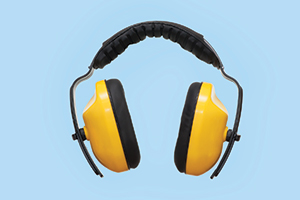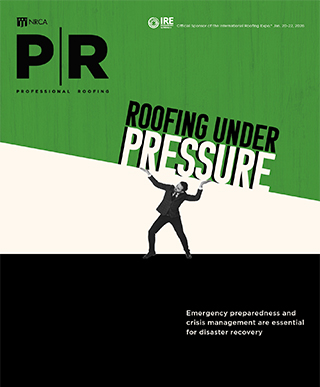Contractor faces $266,175 in proposed penalties
Occupational Safety and Health Administration inspectors again cited Corner Construction Corp., Zion, Ill., for exposing workers to fall hazards, according to OSHA. The company is not an NRCA member.
The latest violations were discovered in Glencoe, Ill., in August 2024 when employees of Corner Construction were observed installing a roof system on a residential structure without required fall-protection equipment, marking the second such incident in six months and the fifth in two years.
OSHA cited the company for allowing employees to work without protection at heights greater than 6 feet and for the unsafe use of ladders. Corner Construction received three violations—one willful, one repeat and one serious—and faces $266,175 in proposed penalties.
In February 2024, OSHA assessed the company $19,015 in penalties after citing a repeat violation for failure to provide fall protection at a job site in Downers Grove, Ill. The 2024 violations follow similar citations issued after three inspections in 2022 and 2023. The company currently is liable for $82,000 in unpaid OSHA penalties.
Falls are the leading cause of death in the construction industry. NRCA’s classes, webinars and products offer information to ensure you properly train your employees and can keep them safe. Visit shop.nrca.net for more information.
NIOSH recommends individual fit-testing for hearing protection

A recent policy update from the National Institute for Occupational Safety and Health calls on employers to use “individual, qualitative fit testing” to assess the effectiveness of workers’ hearing protection devices.
The update, published in January, revises guidance featured in the agency’s June 1998 criteria document for a recommended standard addressing occupational noise exposure.
In the 1998 document, NIOSH said workers should receive individual fit testing for hearing protection but noted commercially available fit-test systems weren’t readily available. The update states: “NIOSH instead recommended de-rating the manufacturer’s labeled noise reduction rating to estimate a worker’s ‘as worn’ hearing protector attenuation.”
View the National Institute for Occupational Safety and Health’s policy
Now, “advances in research and technology have made it possible to quickly check the attenuation each worker receives from their preferred hearing protection devices at the worksite,” NIOSH continues. Additionally, “several hearing protector fit-test systems are now available” that determine a personal attenuation rating “that accurately reflects the level of sound reduction an individual worker receives while wearing a specific hearing protector.” The personal attenuation rating also may determine an individual has achieved a specified level of protection.
The agency emphasizes that though it recommends the use of individual hearing protector fit testing in the field as a best practice for employers, it does not favor any particular fit-testing method.
CPWR offers resources to find properly fitting PPE

CPWR–The Center for Construction Research and Training has compiled a list of providers of appropriate-fitting personal protective equipment for all employees.
CPWR provides links to companies focused exclusively on women’s wear, as well as listings for products including construction footwear, hearing protection, harnesses for fall-arrest systems, protective headgear, flame-resistant clothing, safety gloves and maternity wear.
“Equitable PPE is a serious occupational safety and health issue,” CPWR says. “PPE that does not fit properly will not adequately protect against workplace hazards and may even create new hazards.”
Examples include baggy clothing that triggers a tripping hazard or catches on machinery and oversized gloves that increase the risk of exposure to harmful chemicals.
“Providing PPE that fits properly helps ensure all employees are protected,” CPWR says.
An Occupational Safety and Health Administration final rule requiring PPE to properly fit each worker in the construction industry went into effect in January.
CPWR’s PPE list is available at cpwr.com/research.



